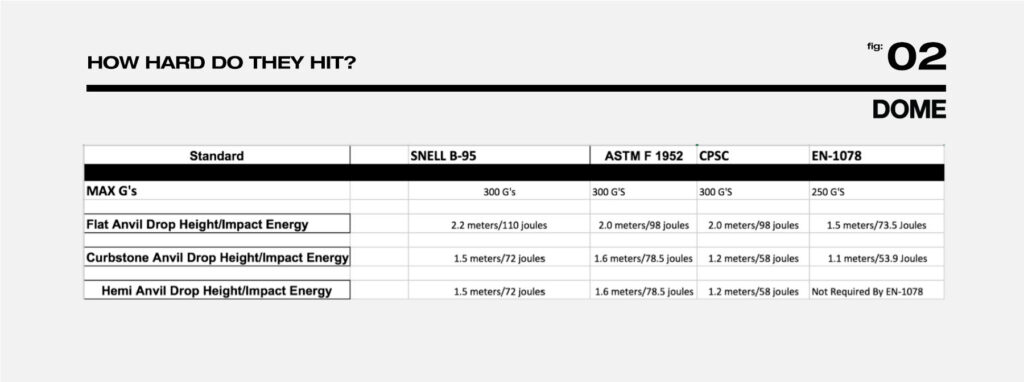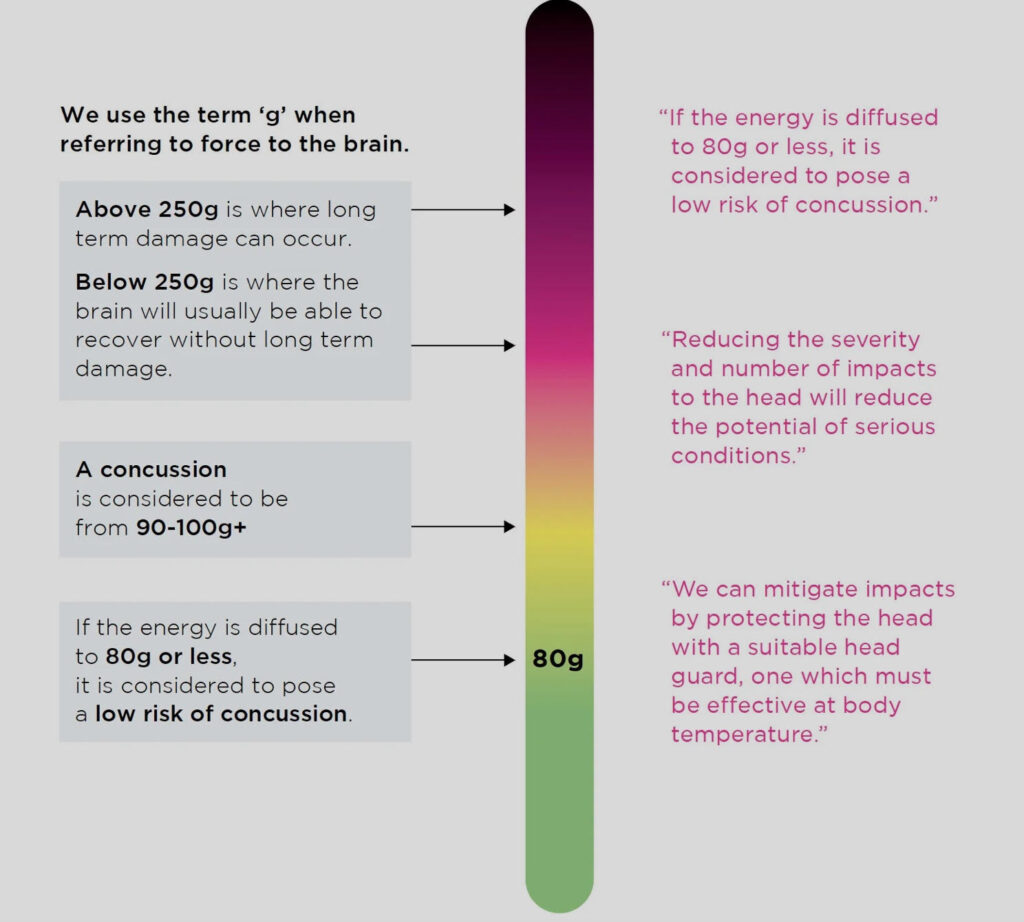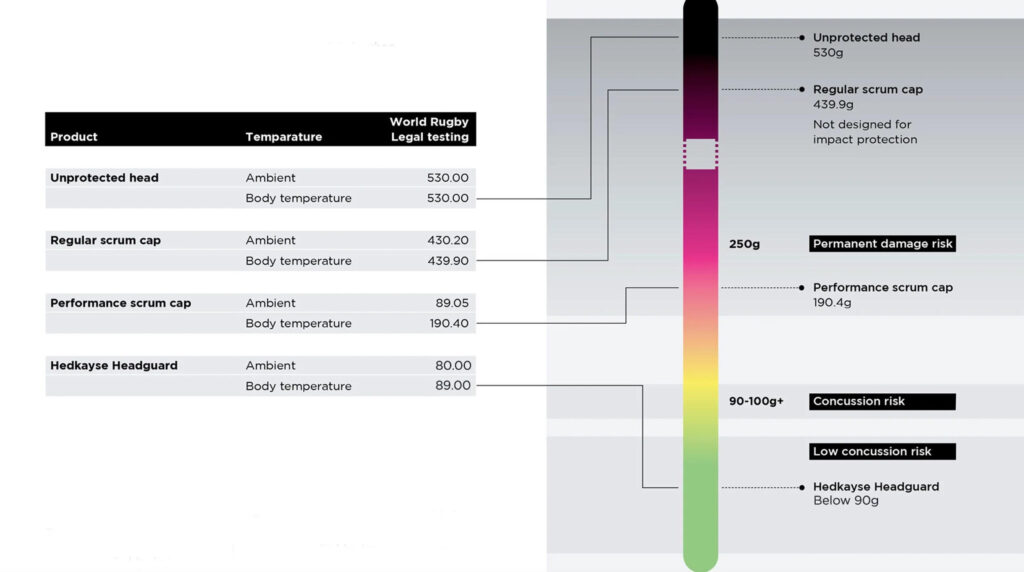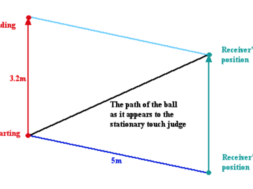
Second Law of Motion:- momentum, product of the mass of a particle and its velocity. Momentum is a vector quantity; i.e., it has both magnitude and direction. Isaac Newton’s second law of motion states that the time rate of change of momentum is equal to the force acting on the particle. Momentum
There is a clear change in momentum as the player is involved in the impact.
From Newton’s second law it follows that, if a constant force acts on a particle for a given time, the product of force and the time interval (the impulse) is equal to the change in the momentum. Conversely, the momentum of a particle is a measure of the time required for a constant force to bring it to rest.
The last sentence is key in trying to understand the forces involved in head collisions in rugby are a huge concern but how you calculate the G force involved?In trying to understand if the new Hedkayse rugby headguard, increase the time to bring it to rest means you need a smaller force.
eg. an airbags in a car reduce the impact of a collision by allowing the force to act over a longer time
The impulse-momentum theorem.
If the foam increases the time bringing the head to rest then it will have an effect, whether that effect prevents concussion is dependent on: 1) the individual 2) the momentum involved.
A larger mass at the same speed will have more momentum.
Head Collisions in Rugby
The hedkayse head guard uses a foam they call enkayse on that page they list sports and the test approvals. I chose cycling because its a sport I understand.The two standards that it meets for cycling are EN-1078 / SNELL Snell is a higher standard than EN-1078 which is the EU standard.The tests that the helmets pass are described here for EN-1078 and this page for Snell taking the figure two in the last link.

Professor Mansoor Khan on the Hedkayse site indicates that concussion might occur at around 90- 100G but that if the energy is diffused to less than 80G there is a low risk of concussion.

The hedkayse head guard is compared to other head guards in the graphic below

Clearly we need in use accelerometer data (as trialled by Max Lahiff of Bristol Bears rugby) to fully assess the head guard but whist not being a solution it seems to have an effect and warrants further discussion.
Understanding G forces.
Head collisions in cycling – a comparison
In trying to understand if the new Hedkayse headguard can transmit a thousand or more g’s to your brain in about two thousandths of a second, let’s consider what happens as you come to a violent, very sudden stop on the hard, completely unyielding pavement having fallen of a bicycle.
With a helmet between you and the pavement your stop is stretched out for about seven or eight thousandths of a second by the crushing of the helmet foam. That little bit of delay and stretching out of the energy pulse can make the difference between life and death or brain injury.
Initial velocity – Final velocity
___________________________ = G force
Time x 9.81
For verification try this G force calculator
If the threshold for concussion is 90-100G then:
So if Starting velocity = 10m/s Finishing velocity = 0 and that happens over 0.0001 of a second (1/10 milliseconds) the G force is -10197 G (deceleration) UNSURVIVABLE
So if Starting velocity = 10m/s Finishing velocity = 0 and that happens over 0.005 of a second (5 milliseconds) the G force is -204 G (deceleration) CONCUSSION
So if Starting velocity = 10m/s Finishing velocity = 0 and that happens over 0.015 of a second (15 milliseconds) the G force is -68 G (deceleration) NON CONCUSSION
All that needs to happen when these head collisions occur is that the time of impact be dragged out a bit. If we can establish that the head guard does that it has a clear benefit.
This is the same principle of how an airbag works.












